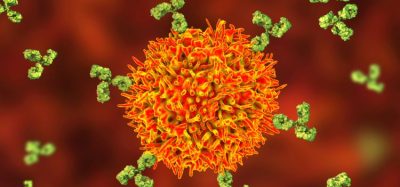FDA approves Palforzia for treatment of peanut allergy in children
Palforzia, a peanut allergen powder, has been approved for the reduction of allergic reactions in children aged four to 17. It is not an emergency treatment but instead designed to build tolerance.
The US Food and Drug Administration (FDA) has approved Palforzia, a peanut allergen powder oral immunotherapy for the lessening of allergic reactions that may occur with accidental exposure to peanut in those aged four to 17 years.
Palforzia is not an emergency treatment for allergic reactions, but theoretically would help over time to mitigate the severity of a reaction.”
“Peanut allergy affects approximately one million children in the US and only one out of five of these children will outgrow their allergy. Because there is no cure, allergic individuals must strictly avoid exposure to prevent severe and potentially life-threatening reactions,” said Dr Peter Marks, director of the FDA’s Center for Biologics Evaluation and Research. “Even with strict avoidance, inadvertent exposures can and do occur. When used in conjunction with peanut avoidance, Palforzia provides an FDA-approved treatment option to help reduce the risk of these allergic reactions in children with peanut allergy.”
Peanut allergies are unpredictable in occurrence and in how they present, with some individuals experiencing severe reactions from trace amounts. Physical symptoms can develop within seconds of exposure. Palforzia is not an emergency treatment for allergic reactions, but theoretically would help over time to mitigate the severity of a reaction.
There are three phases to Palforzia treatment:
- Initial dose escalation – a single day of a higher dose
- Up-dosing – gradually increasing the dose up through 11 levels over several months, each initially higher dose is administered under the supervision of a healthcare professional in a hospital or doctor’s office
- Maintenance dosing – after completing the up-dosing a patient takes a daily maintenance dose to retain their tolerance.
…anaphylaxis could occur at any stage of treatment but is most likely after the initial dose escalation and the first dose of each up-dosing level.”
Palforzia was approved on the results of a randomised, double-blind, placebo-controlled study in approximately 500 individuals with a peanut allergy. The study assessed the response of participants to a 600mg dose of peanut protein after six months of the maintenance treatment.
Overall, 67.2 percent of Palforzia patients were able to take the dose with no more than mild symptoms, compared to only four percent of placebo patients.
Further trials – two double-blind, placebo-controlled studies in approximately 700 individuals with a peanut allergy – assessed the safety of Palforzia. The studies revealed the most commonly reported side effects were abdominal pain, vomiting, throat irritation, hives and anaphylaxis. Palforzia should not be administered to those with uncontrolled asthma.
According to the FDA, anaphylaxis could occur at any stage of treatment but is most likely after the initial dose escalation and the first dose of each up-dosing level. Patients who experience certain allergic reactions need to discontinue treatment or have their dosing schedule modified.
The FDA approval requires a Risk Evaluation and Mitigation strategy (REMS) to mitigate the risks associated with Palforzia. Patients enrolled in the REMS programme will only be able to access the treatment through specially certified healthcare providers, healthcare settings and pharmacies. The FDA has also stipulated the initial dose escalation phase and first dose of each up-dosing level must only be administered to patients in a certified healthcare setting equipped to monitor patients and to identify and manage anaphylaxis.










